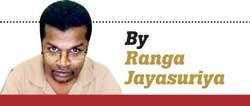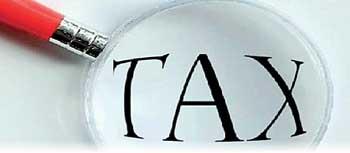31 Jan 2023 - {{hitsCtrl.values.hits}}
 Sri Lanka’s professional elites are the greatest beneficiaries of the Sri Lankan welfare state, and many would not have been in their elevated places without the public tax-funded free education. However, as much as they want, rightly so, the welfare state to succeed, they are unwilling to pay their share
Sri Lanka’s professional elites are the greatest beneficiaries of the Sri Lankan welfare state, and many would not have been in their elevated places without the public tax-funded free education. However, as much as they want, rightly so, the welfare state to succeed, they are unwilling to pay their share
 Though Gotabaya should not be credited for his fallacies, the resultant exogenous shock on the economy due to his policies has compelled his successor to rare and decisive systemwide reforms - though how many of these lofty promises would become a reality is open to question
Though Gotabaya should not be credited for his fallacies, the resultant exogenous shock on the economy due to his policies has compelled his successor to rare and decisive systemwide reforms - though how many of these lofty promises would become a reality is open to question
 Can someone tell me how on earth these two campaign slogans are mutually compatible?
Can someone tell me how on earth these two campaign slogans are mutually compatible?
Both were heard loud and clear in the last week’s ‘Black week’ anti-tax demonstrations by the country’s professional classes - Government doctors, university dons, CEB engineers, bankers etc.
First is the opposition to the government’s new personal income tax, a progressive tax system that lowered the taxable threshold to Rs.100,000 per month and levied an incremental tax at 6% for each additional earning of Rs.500,000 per annum. The maximum tax rate is 36%.
 The second is the civic-minded demand for the regular supply of lifesaving drugs as hospitals across the country face a crippling shortage of basic medical supplies. Probably the latter was added to make the protests appear more amenable to the average public. An overwhelming 90% of Sri Lankan wage earners earn less than the taxable threshold.
The second is the civic-minded demand for the regular supply of lifesaving drugs as hospitals across the country face a crippling shortage of basic medical supplies. Probably the latter was added to make the protests appear more amenable to the average public. An overwhelming 90% of Sri Lankan wage earners earn less than the taxable threshold.
The problem is that these two demands are mutually exclusive- they cancel out the other.
Other than being a cheap political slogan, it is also hypocritical.
A welfare state, which Sri Lanka is unquestionably one, is financed through taxation, mandatory levies on personal income, public and private business revenue, capital gains and indirect taxes.
A welfare state crumbles when the state fails to extract the adequate number of national resources to finance it or when a state adopts a too larger bundle of social welfare, creating a social overreach that it cannot afford within its financial means.
Sri Lanka’s professional elites are the greatest beneficiaries of the Sri Lankan welfare state, and many would not have been in their elevated places without the public tax-funded free education. However, as much as they want, rightly so, the welfare state to succeed, they are unwilling to pay their share.
This is not a problem that sprung overnight due to the government’s tax reforms.
The ratio between direct and indirect taxes as a share of government tax revenue is 20% to 80%. The result has been that Sri Lanka’s welfare state has been financed through loans and printing money, which under Gotabaya Rajapaksa, hit a new high, leading to hyperinflation unseen in Sri Lankan history. His ill-informed tax reforms resulted in the loss of Rs.700 billion in government revenue and led to the sovereign default.
Though Gotabaya should not be credited for his fallacies, the resultant exogenous shock on the economy due to his policies has compelled his successor to rare and decisive systemwide reforms - though how many of these lofty promises would become a reality is open to question.
However, taxing the better off and economically privileged is just one aspect- though extensive taxing on the export sector would discourage investment.
A cursory look at Sri Lanka’s welfare state might also reveal, though it had led to commendable progress on social and health indicators, many of which - on par with upper-income states and still provided free of charge- the overall promise of the welfare state is blunted by the wider economic policies. Alas, these policies are, in effect, designed to favour a microscopic minority who benefitted most through the welfare state and non-competitive local business class that keep milking the system through protectionist laws.
This is not what the welfare state was meant to be.
Sri Lanka’s Welfare state
The welfare state of Sri Lanka is not a Sri Lankan invention but an intrinsic part of the colonial legacy.
The evolution of the welfare state in its nascent form date back to the early decades of the 1900s when the Liberal Party government of Britain first introduced welfare reforms in 1906. The expansion of universal health care in Sri Lanka corresponded to these developments. Later at the end of World War II, economist William Beveridge presented the landmark Beveridge report (titled ‘Social insurance and Allied Services), which the post-war Labour government adopted as the blueprint of Britain’s social reconstruction.
Beveridge, a pioneering Liberal party politician, identified five “giants on the road to reconstruction” that would have to be beaten: poverty, disease, ignorance, squalor, and idleness. He argued these could be solved with a state-run insurance system, and in contrast to the schemes of previous centuries, a minimum level of life would be established that was not extreme or punishing the sick for not being able to work.
This changed the social fabric of Britain and, by extension, some of its colonies.
C.W.W. Kannangara’s free education bill, introduced while Sri Lanka was still a British colony, would not have been a reality without these changes beyond our shores.
Sri Lanka was a welfare state under the British. However, as much as they were genuinely committed to social equality, the latter-day leaders of independent Sri Lanka probably overstretched it, driven by political calculations. Worst still, they built a protectionist wall and cultivated state and private monopolies.
Protectionism and monopolies were not limited to the economy but had a virulent influence on all quarters of public life. Higher Education itself became a state monopoly, which effectively left out a vast majority of the country’s children in favour of a few achievers.
That explains why despite the immense promise of the welfare state, why Sri Lanka’s primary mode of foreign revenue is remittance from unskilled workers- housemaids and drivers- toiling in the Middle East. Half of the Sri Lankan migrant workers in the Middle East have education only up to GCE ordinary level and have no vocational training.
Of around 160,000 students who qualify for university, only 40,000 (25%) at best would go to a public university fully funded by public funds.
The rest is simply forgotten. Not only do they have limited opportunities for higher education, but such options are also often curtailed by a self-interested campaign by the privileged minority who could attend a university.
It is worse for students who cannot get through ordinary levels. Of the 311, 312 students who sat for Ordinary levels in 2021, only 78% passed. That leaves 80,000 students who are left out without adequate opportunities for vocational training or higher education.
This system is morally wrong and economically counterproductive. Sri Lanka allocates the elephantine share of its national wealth to less than 15 % of the youth at the expense of the vast majority.
This style of resource allocation had resulted in vast inequalities and an unproductive workforce.
India is a classic case, where extensive emphasis on higher education of a privileged minority has created a wholly unequal society and cumbersome workforce, 85% of which work in the grey economy.
The better example Sri Lanka should follow is what the countries like Taiwan or South Korea in the past or Vietnam at present. They invested in the majority through vocational training and state-of-the-art primary education.
Sri Lanka should reform its welfare state to serve the majority of its children. It should liberalize education and provide financial aid to children to have higher education in private universities and technical colleges. It should build more vocational training institutes and upgrade primary and secondary education.
It should devise a system in which every child has a fair share of upward mobility. It should be a system guided by market forces, as much as the well-intentioned premise of the welfare state- and not one dictated by a few who think they have a feudal entitlement over the rest of the country’s children.
Follow @RangaJayasuriya on Twitter
08 Jan 2025 17 minute ago
08 Jan 2025 1 hours ago
08 Jan 2025 3 hours ago
08 Jan 2025 4 hours ago